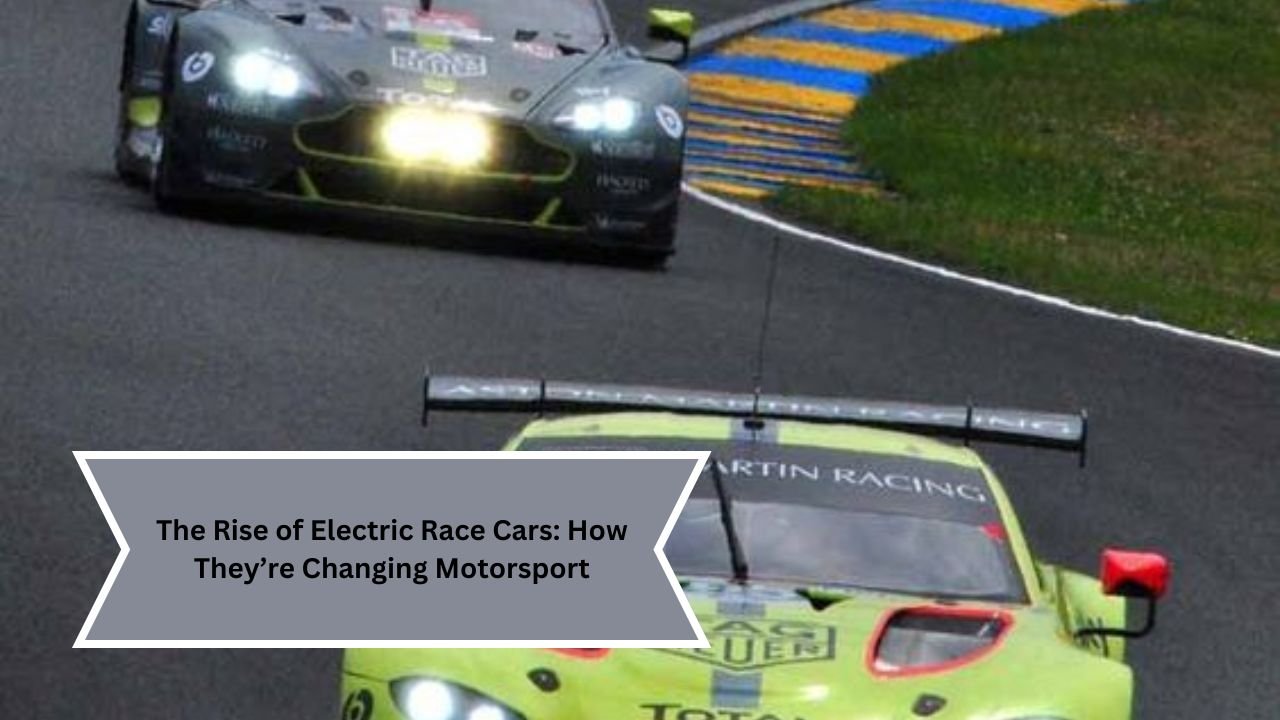In recent years, electric race cars have surged into the spotlight, capturing the attention of fans, manufacturers, and sponsors alike. As technology advances and environmental concerns become more pressing, the world of motorsport is undergoing a significant transformation. This article explores the rise of electric race cars and their impact on the motorsport landscape, examining technological innovations, competitive dynamics, and the implications for the future of racing.
1. A Shift in Paradigm
Traditionally, motorsport has been synonymous with roaring engines and high-octane fuel consumption. However, the growing awareness of climate change and a shift towards sustainability have prompted a reevaluation of what racing can be. Electric vehicles (EVs) are at the forefront of this transformation, showcasing the potential for thrilling competition while minimizing environmental impact.
The introduction of electric race cars is not just about embracing new technology; it represents a cultural shift within motorsport. Fans are increasingly supportive of greener initiatives, and teams are eager to adopt innovations that align with a more sustainable future. This shift is not merely reactive; it’s an exciting evolution that is redefining the essence of racing.
2. The Technology Behind Electric Racing
The performance capabilities of electric race cars are remarkable. Equipped with advanced battery systems and electric motors, these vehicles can deliver impressive acceleration and speed. For example, Formula E, the premier electric racing series, features cars that can accelerate from 0 to 60 mph in just 2.8 seconds. The instant torque provided by electric motors offers a thrilling experience that rivals traditional combustion engines.
Furthermore, advancements in battery technology have significantly improved the range and efficiency of electric race cars. Manufacturers are investing heavily in research and development to create lighter, more powerful batteries that can withstand the rigors of racing. Innovations like regenerative braking, which recaptures energy during deceleration, not only enhance performance but also increase the overall efficiency of the vehicles.
3. Major Competitions Leading the Charge
Formula E
Since its inception in 2014, Formula E has become the flagship series for electric racing. Featuring teams from major automotive manufacturers like Audi, BMW, and Jaguar, the series has attracted a global audience. Races are held on temporary street circuits in iconic cities around the world, enhancing the spectacle and accessibility of the sport.
Formula E’s unique format includes “Attack Mode,” which allows drivers to gain additional power temporarily by driving through designated zones on the track. This element of strategy adds excitement and unpredictability, demonstrating that electric racing can be just as thrilling as traditional formats.
Other Emerging Series
In addition to Formula E, other series are gaining traction. The Extreme E championship, launched in 2021, features electric SUVs racing in remote locations, highlighting the impact of climate change. Each race is tied to environmental awareness campaigns, making the series not just a competition but also a platform for promoting sustainability.
Furthermore, manufacturers are exploring electric prototypes and GT racing, with series like the Electric GT and the FIA’s Electric Touring Car Championship paving the way for wider adoption of electric vehicles across various racing formats.
4. Competitive Dynamics
The rise of electric race cars is reshaping competitive dynamics within motorsport. Traditional teams are beginning to invest in electric technology, while new entrants are emerging with innovative designs and strategies. This influx of talent and resources creates a diverse competitive landscape, where innovation and adaptability are paramount.
Moreover, the focus on technology transfer is becoming increasingly prominent. Insights gained from electric racing can translate to consumer EV development, allowing manufacturers to enhance their commercial offerings. This symbiotic relationship between racing and automotive technology fosters innovation that benefits both sectors.
5. Fan Engagement and the Future of Motorsport
The future of motorsport lies not only in the cars themselves but also in how fans engage with the sport. Electric racing has the potential to attract a new demographic of fans who are passionate about sustainability and technology. The interactive nature of electric racing events, combined with the use of digital platforms, allows for enhanced viewer experiences. Fans can participate in fantasy leagues, track real-time performance data, and engage with teams and drivers through social media.
As the sport evolves, integrating augmented reality (AR) and virtual reality (VR) technologies could revolutionize how fans experience racing. Imagine being able to virtually sit in the driver’s seat or participate in a race simulation from the comfort of your home. These innovations could draw a younger, tech-savvy audience, ensuring the longevity and relevance of motorsport in a rapidly changing world.
6. Challenges Ahead
Despite the promising future of electric race cars, challenges remain. The initial cost of developing competitive electric vehicles can be prohibitive, especially for smaller teams. Additionally, the racing community must address concerns about charging infrastructure and battery disposal, ensuring that the sport adheres to its sustainability goals.
Moreover, the sound and spectacle of traditional racing are integral to its appeal. Electric vehicles, while impressive in their performance, often lack the auditory thrill associated with combustion engines. Finding ways to enhance the sensory experience of electric racing—through sound design or other means—will be crucial in maintaining fan engagement.
7. The Road Ahead
The rise of electric race cars is just the beginning of a broader shift in motorsport. As technology continues to advance and societal expectations evolve, the integration of electric vehicles in racing will likely deepen. We can expect to see more hybrid models, where electric and combustion technologies coexist, as well as innovations in autonomous racing.
Furthermore, as regulatory frameworks become more stringent regarding emissions, electric racing will likely play a key role in shaping the future of motorsport. Manufacturers will have to adapt to these changes, pushing the boundaries of what is possible in both performance and sustainability.
Conclusion
The rise of electric race cars represents a thrilling new chapter in the story of motorsport. By embracing technology and sustainability, the racing world is not only evolving but also setting an example for industries beyond the track. As electric racing continues to gain momentum, it promises to deliver not only exciting competition but also a path toward a greener, more sustainable future in motorsport. The shift from traditional engines to electric power is not just about racing; it’s about reimagining what racing can be in a rapidly changing world.

